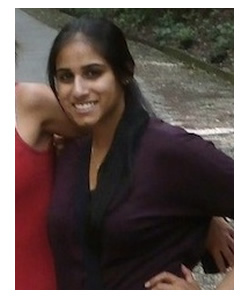In Islam, congregational prayer is a highly emphasized concept. While women are allowed to offer their five daily prayers at home, it is obligatory for men to pray in congregation with others at the mosque as often as possible, especially during the Friday jum'aa prayers. It was no surprise, then, that whenever we visited a mosque in Malaysia, if the time was near an upcoming daily prayer, there would be several people waiting for the imam to begin leading the prayer.
My aunt and uncle, who I was visiting for Eid, ensured that I was awake by 4:30 a.m. to join them for the Fajr, the first prayer of the day, at their local mosque. On Eid day, Wilayah Mosque in Kuala Lumpur, with a 20,000-plus capacity, was virtually packed with both men and women.
In congregation, men and women stand in rows, shoulder to shoulder, and recite, bow, and prostrate in unison. To me, this unity in prayer symbolizes the unity of man and equal status before God. Prayer in congregation also encourages people to gather and benefit from other activities at the mosque aside from the prayer itself—for example, listening to and reflecting on khutbahs, or sermons, given by the Imam, and participating in study circles (halaqahs) topics on religious teachings or spirituality.
As per this strongly rooted appreciation and perception of congregational prayer, I was intrigued to briefly observe the prayer practices of Buddhist worshippers at the temples I visited. I watched as worshippers lit incense sticks with the candle displays set up around the temple, faced towards the large Buddha statue, clasped their hands, and bowed their heads in prayer. This form of prayer seemed much more of an independent and individual experience, in contrast to the unified Islamic form of worship. I would need to do more research on the specifics of Buddhist prayer to learn more—but the experience made me think a bit about the forms that prayer can take in various religions, and the significance that individual vs. congregational prayer in houses of worship can hold.
Surprisingly, an important trigger point for many of my reflections on prayer this semester occurred at, of all places, the Taiwan Taoyuan Airport. I happened upon the prayer rooms while walking to my terminal. My initial excitement at finding a prayer room fizzled when I noticed that beside the door with the Islamic crescent moon (indicating the Muslim prayer room), there were two other doors, one beneath the Buddhist Ohm symbol, and the other beneath a Christian cross. Wait a minute, I thought—even disregarding my distaste with the fact that only three religions were represented here—does this imply that only those affiliated with a specific religion can pray?
The Pew Research Center conducted a survey that found that just under a fifth of US adults are unaffiliated with any religion in 2012, and this group is growing. While 65 percent of all US adults describe themselves as religious, 18 percent describe themselves as spiritual but not religious, and 15 percent are neither religious nor spiritual. With regards to prayer, 21 percent of the religiously unaffiliated reported that they pray at least once daily, and 44 percent of those who self-identify as spiritual but not religious pray daily. Though representative of the United States, these numbers show that clearly, there are other motivations for, and forms of, prayer, outside of fitting into prescribed religious practices or with the aim of communicating with the Divine. A Washington Post article published earlier this year interviewed a number of self-described “nonbelievers” who take part in some form of prayer, which often encompass elements of contemplation, meditation, and an avenue for connecting with something beyond oneself.
This rising diversity in religious and spiritual identity deserves to be acknowledged. The interpretation of the word “prayer” is diverse, and I feel that there should be a greater push for establishing universal prayer spaces and meditation areas in public places. Perhaps the culture of many Asian countries precludes the religiously unaffiliated from having a stronger voice just yet, but I hope that greater tolerance in the future helps foster the establishment of such spaces, so that everyone can partake in the benefits of prayer in his or her own way.

